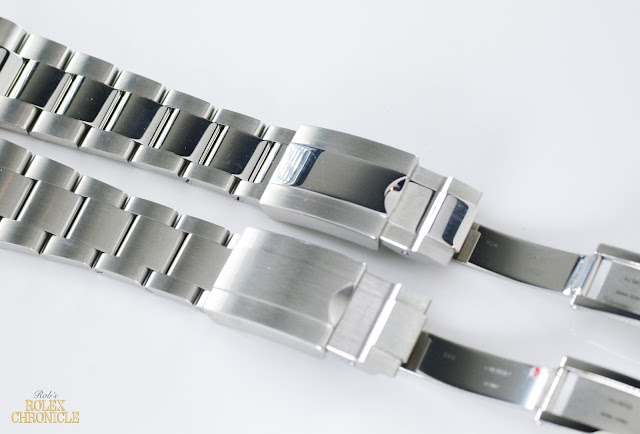Rolex Model Comparison: Explorer II Vs GMT-Master II
May 02, 2016 |
| Rolex Explorer II and GMT-Master II Side by Side |
 |
| Rolex Explorer II and GMT-Master II Case Comparison |
 |
| Rolex Explorer II and GMT-Master II Bezel Comparison |
 |
| Rolex Explorer II and GMT-Master II Bracelet and Clasp Comparison |
Aside from the ceramic bezel, the GMT-Master II also differs from the Explorer II in the color and style of the 24-hour hand. On the GMT it comes in green with an arrowhead shape. The Explorer II 24-hour hand comes in orange in the same shape as the original model introduced in 1971. Another difference between the two is the color options for the dial: unlike the GMT-Master II, the Explorer II is available with a white dial in addition to the black dial shown in these photos.
 |
| Rolex Explorer II and GMT-Master II Side by Side |
The ultimate decision between the Explorer II and GMT-Master II comes down to size and utility. A 42mm wristwatch like the Explorer II is a good value for those who are looking for a larger stainless steel wristwatch. However, a frequent flyer who would actually use the second time zone feature often may be more inclined to purchase the GMT based on the bi-directional ceramic bezel.
>>BACK TO MODEL COMPARISONS






0 comments